It’s bad enough that you’ve sustained an injury at work, but your feelings of frustration could be amplified if it turns out to be your employer’s fault.
Workplace negligence is, unfortunately, all too common. Unsafe machinery, hazardous working conditions, and unreasonable demands leave employees with both physical and psychological injuries. Whether broken bones or bronchitis, you deserve some justice.
Filing for a work injury damages claim can be a daunting process, which is why we’re here to help. This guide will explain everything related to workplace negligence, including what it is, how to claim it, and what the process involves.
What Exactly is Workplace Negligence?
If you’ve been injured at work and it wasn’t your fault, it could result from workplace negligence. This is when your employer is directly to blame for your injury, illness, or condition, through preventable and sometimes illegal conditions. If so, you can sue your employer and claim compensation for your injury.
Workplace negligence can be the result of the following factors:
- Poor facilities
- Unsafe or faulty machinery
- Unreasonable working conditions
- Substandard medical treatment
Your employer is also responsible for your coworkers, so if colleagues caused your serious injury, this could also be cause to sue for workplace negligence.
Can I Sue My Employer for My Work Injury?
With that in mind, then, you can sue your employer over a workplace injury you have sustained. To do this, you must file a work injury damages claim. Generally, you will only be successful if you meet certain eligibility requirements. For instance, you must have your injury assessed by a qualified permanent impairment assessor.
To sue your employer, your injury must be a direct cause of their (your employer’s) negligence. Make sure you are eligible before claiming to guarantee your best chances of suing success. The next section offers more details on this.
Am I Eligible for Work Injury Damages?
Not everyone can sue their employer and claim workplace negligence. There are strict eligibility criteria that you’ll have to meet in order to be successful with your claim, as outlined by the State Insurance Regulatory Authority. These include the following:
- You must have at least 15% permanent impairment when evaluated by a relevant and skilled permanent impairment assessor. Your insurer must also accept this assessment.
- You must make a claim within three years of your injury (some exceptions allowed).
- You must have received all statutory lump sum entitlements for your permanent impairment. These must be settled before you can claim workplace negligence damages.
Eligibility may also depend on the date and time of your injury, the place where your injury occurred, and the extent of negligence from other parties.
How Do I Prove My Employer Was Negligent?
It’s one thing to realise you have a claim for workplace negligence, but how can you prove your employer was actually negligent? No matter how good your legal representation is, the concept of negligence is often disputed and hard to pin down. In some cases, lawyers may even need to bring in a third party, such as an engineer or architect, to determine a case of negligence.
In essence, though, you can prove your employer was negligent by establishing that:
- Your employer had a duty of care towards you; and
- Your employer breached this duty of care; and
- Your injury directly resulted from this breach.
What is a Duty of Care?
Every employer owes a duty of care towards their workers. This means that every employer has to take reasonable measures to ensure their employees aren’t unnecessarily injured during work hours or on work premises. Any risks must be appropriately mediated and any work environments must be made reasonably safe.
An employer’s duty of care is non-delegable, meaning they cannot delegate this to an external party. The employer must enact the duty of care themself to protect their employees from both physical and psychological damage.

Examples of Injuries as a Result of Workplace Negligence
Workplace injuries and illnesses take many forms. If you sustain a serious injury due to workplace negligence, you may be able to sue your employer. These aren’t just limited to physical injuries either, as insurers often cover psychological conditions too.
Accidents involving machinery, electrical devices, and vehicles, for example, all rank among the most common workplace injuries. Employees frequently suffer broken bones, disfigurement, loss of limbs, or worse, as a result. If your employer fails to keep your facilities in good working order and you sustain a serious injury from a piece of faulty or damaged equipment, you could sue for workplace negligence.
Less immediate health conditions, such as heart disease, breathing problems, and even cancer, may also result from employer negligence. If you are constantly working in conditions that are unsafe or unsuitable for your job responsibilities, such as in an asbestos-covered building, your employer may be at fault for any illnesses you develop.
Can I Claim for Psychological Injuries as a Result of Workplace Negligence?
Yes, most insurers let you claim workers’ compensation for psychological injuries. While the most commonly reported impairments are physical, mental illnesses and psychological conditions can develop as a result of employer negligence. It is within your employer’s duty of care towards you that they must protect their staff from bullying and harrassment, as well as shield them from any inappropriate or undue events.
What are the Work Injury Damages payouts?
Unlike other workers’ compensation claims that offer weekly payments, work injury claims due to negligence only pay out lump sums. This means you will receive one single sum of money that will cover damages and medical expenses relating to your workplace injury.
Before you can claim a lump sum for workplace negligence damages, however, you must have already received a different lump sum payment for permanent impairment. This is outlined in the eligibility requirements above. For more information on the various workers’ compensation payouts, check out our handy guide.
What Happens to My Weekly Payments & Medical Expenses?
A workplace negligence settlement means you can no longer receive any other type of workers’ compensation related to that injury. This includes weekly payments, medical expenses, and rehabilitation expenses. Furthermore, any weekly payments already paid to you may have to be repaid from the settlement amount.
What’s the Time Limit to Make a Work Injury Damages Claim?
As with most legal processes, there are specific timeframes that you must work around to ensure your claim is successful. If you submit a work injury damages claim too late, you will likely be denied any compensation, which is why it’s highly important that you avoid delaying the legal process.
You have three years from learning about your injury to claim workplace negligence damages. The reason this time limit is quite long is to allow for other legal processes, such as standard workers compensation claims, to be resolved. Once these are settled, you can only sue your employer for workplace negligence.

What is the Process for Claiming Work Injury Damages?
If you want to claim work injury damages as a result of workplace negligence, you must write to your insurer. Be sure to attach the following information:
- Details of your injury, including when and where it happened.
- Any previous injury or employment that may have caused or provoked your current impairment.
- Details of negligence by your employer, including supporting evidence and documentation where relevant.
- The financial loss that you are claiming as damages.
- A report from an appropriate permanent impairment assessor.
If the insurer requires any additional information from you, they must let you know within two weeks of receiving your initial letter. Once they have all the necessary details, they may take up to two months before determining liability for your claim.
The process of claiming work damages can be daunting, so make sure you get legal representation when submitting your claim. Always consult with your lawyer before sending it.
What Happens When the Insurer Accepts Liability?
If the insurer accepts liability for your work injury damages, they will send you a settlement offer. You’ll likely receive this in a letter, which will state the lump sum your insurer is offering to pay you, or a method for determining the exact monetary figure. If you accept their proposal, you will receive your compensation, and legal processes will cease.
You can, of course, reject the insurer’s offer if you think it doesn’t cover the compensation you deserve. This will open up court proceedings, but before that, both parties will be referred to a mediation stage by the Personal Injury Commission. If an agreement cannot be reached during mediation, your claim will be taken to court.
What Happens When the Insurer Disputes My Claim?
If the insurer rejects or disputes your claim, this doesn’t mean it’s all over. Even though a letter of rejection can be disheartening, you can still lodge a formal appeal and hopefully get this decision overturned. Before you can do this, though, you need to fill out a pre-filing statement that explains the specifics of your claim and the evidence you will rely on. Then, you’ll enter into one of two processes, both of which are outlined below.
Go Through a Work Injury Damages Mediation Process
As mentioned previously, all parties will be referred to a mediation process by the Personal Injury Commission if any disputes emerge. The Commission will attempt to find a resolution between you and the insurer by holding open discussions with the aim of settling the dispute without a lengthy legal process.
Start Court Proceedings
If no agreement can be reached during the mediation stage, you will then have to open court proceedings against the insurer. Workplace injury damage claims are most often heard in the District Court.
According to the State Insurance Regulatory Authority (SIRA), “Court proceedings for work injury damages must begin within three years of the injury date, unless you have the court’s approval”. Make sure you have legal representation before you proceed to this stage.
Reach out to our Work Injury Damages Lawyers
If you’ve been injured as a result of your employer’s negligence and want justice, our Sydney-based workers compensations lawyers are more than happy to help. We know how daunting legal proceedings can be, especially if you’re suffering through difficult times with a work-related injury, but we’ll simplify everything and get you the help you need.
That’s why we offer exceptional legal services that can support you through your workers’ compensation claims, including filing for workplace negligence. Alliance Compensation & Litigation Lawyers have helped thousands of people just like you claim the financial settlements they deserve.
Contact us today on 02 8764 1776 or send us an email at refer@alliancecomplawyers.com.au


















